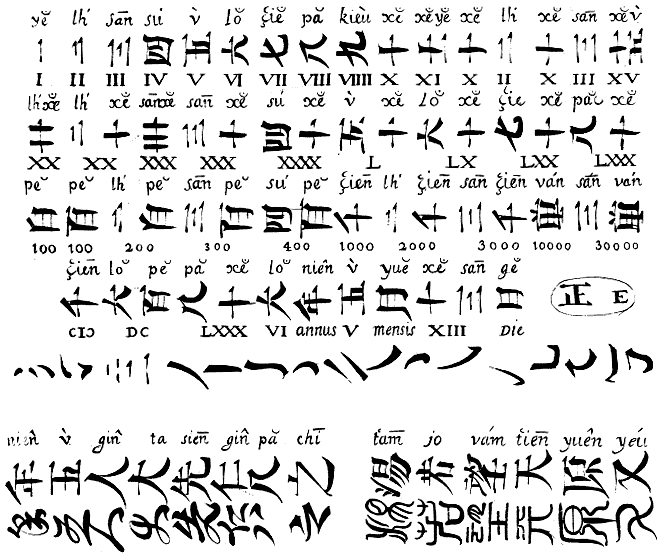Matt at No-sword tells of the welcome news that many back issues of the journals of the Royal Society are now online. What makes this particularly interesting is that the Royal Society has been publishing these since at least 1665.
So I dug around and found “Some Observations, and Conjectures concerning the Chinese Characters,” which dates from the late 1600s. It was published in an issue of Philosophical Transactions that contains not one but two articles by Edmond Halley. Wow.
The article on Chinese characters, however, is in many places opaque — not that that’s really a big surprise considering this was written more than 300 years ago. The author is intrigued by the notion of a universal artificial language. He concludes, “Now as by such a Language the Character might be made Effable without Musical Tones or Difficult Aspirations, so had we Dictionarys of the Signification of the Characters, we might as soon learn the Chinese Character, as we can Latine, or any other Language to be learnt by Book, and not by Speaking.”
This appears to be an early example of several myths about Chinese characters, such as the ideographic myth, which was first debunked in the West about 150 years later by Peter DuPonceau.
The author also tells of what he believes is the “true design” of the Yi Ching (Yìj?ng ??):
both the Chinese and European Commentators assert it to be a Conjuring Book, or a Book to tell Fortunes by, and to be made use of by the Chinese for that purpose; whereas by the small Specimen I have seen of it, I conceive it to contain the whole Ground, Rule or Grammer, of their Character, Language and Philosophy, and that by the understanding of it, the Foundation and Rule of their Language and Character, may be without much difficulty Deciphered and Understood.
I don’t think that particular line of thought got very far.
The article concludes with an illustration that mainly features numbers in Chinese characters. What makes this particularly interesting, at least for me, is the addition of romanization. I have rotated the image counter-clockwise to make it easier to read the romanization. Note especially the use of the letter x. (Click the image to see it slightly enlarged.)
sources and further readings:
- “They always drink their liquors warme”, No-sword, September 24, 2006
- Some Observations, and Conjectures concerning the Chinese Characters. Made by R. H. R. S. S.
Philosophical Transactions (1683-1775), Volume 16, 1686/1692, pp. 63-78. - Letter from Peter S. Du Ponceau to Captain Basil Hall, R. B. N., Peter DuPonceau, Transactions of the Historical and Literary Committee of the American Philosophical Society vol. 2, 1838


 The latest issue of Science features an article on a stone slab found in Veracruz, Mexico. Scholars have identified the inscriptions on the stone — tentatively dated to at least 900 B.C.E. — as the earliest writing yet found in the Americas.
The latest issue of Science features an article on a stone slab found in Veracruz, Mexico. Scholars have identified the inscriptions on the stone — tentatively dated to at least 900 B.C.E. — as the earliest writing yet found in the Americas.